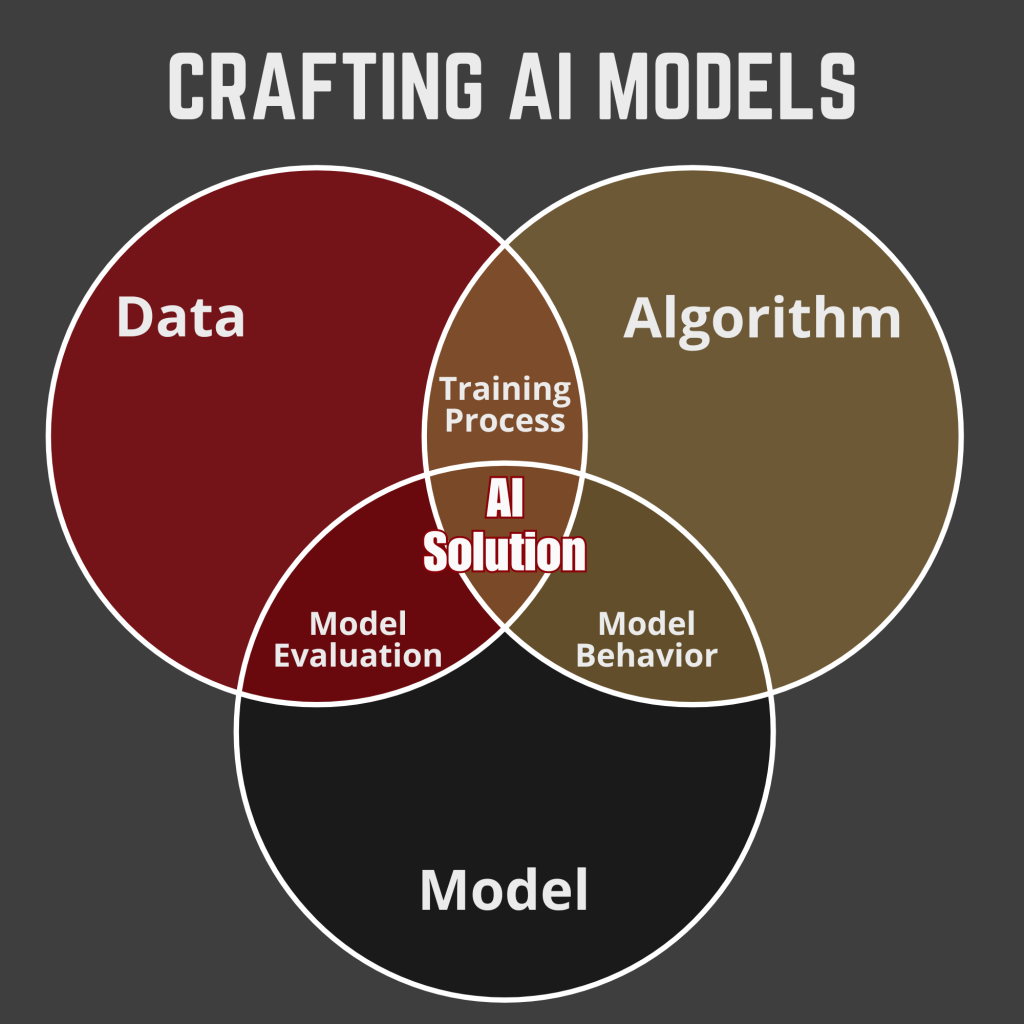Crafting AI Models
Understanding the core of AI models is essential for anyone wanting to understand How to Think with AI and leverage its capabilities effectively. Yet, there is often confusion about what exactly an AI model is and how it functions. The goal of this post is to demystify the concept of AI models in a way that’s accessible to everyone.
What is an AI Model?
At its core, an AI model is a sophisticated mathematical construct that is typically composed of mathematical equations, functions, or structures that represent patterns or relationships within the data. It is designed to perform specific tasks by recognizing patterns in data. Think of it as a digital brain that has been trained to make decisions or predictions based on the information it has processed. But how do we create these smart models? Let’s break it down.
The Building Blocks: Data and Algorithms
Creating an AI model involves two main components:
Data: This is the raw material for AI. Data can come in various forms—text, images, audio, and more. The more high-quality data we have, the better our AI model can learn and perform.
Algorithms: These are the recipes or sets of rules that tell the AI how to learn from the data. Different algorithms are suited to different types of tasks. For instance, some algorithms are great for recognizing images, while others excel at understanding and generating human language.

The Process: Training the Model
Here’s a simplified overview of how data and algorithms come together to create an AI model:
Data Collection: Gather the necessary data. For example, if we’re building an AI to recognize cats in photos, we need a large collection of images labeled with whether they contain cats.
Data Preprocessing: Clean and organize the data. This step ensures that the data is in the best possible shape for the algorithm to process.
Selecting an Algorithm: Choose the appropriate algorithm based on the task at hand. For image recognition, a common choice is a convolutional neural network (CNN).
Training the Model: Feed the data into the algorithm. The algorithm processes the data, learning to recognize patterns and make predictions. This step often requires significant computational power and time.
Evaluating the Model: Test the model with new, unseen data to ensure it performs well. Adjustments are made as necessary to improve accuracy.
Deployment: Once the model is trained and tested, it can be deployed into real-world applications. This is where the model starts providing value by making predictions or decisions in everyday tasks.
Why Understanding AI Models Matters
Understanding what an AI model is and how it’s built is crucial for several reasons. For businesses and individuals using AI, knowing how models work helps in making informed choices about which AI solutions to adopt. As AI becomes more prevalent, transparency in how models are created and used builds trust and accountability. Additionally, as AI continues to evolve, having a foundational understanding of its building blocks can help individuals stay relevant in a tech-driven world.
Conclusion
AI models are powerful tools that can perform a wide range of tasks, from recognizing faces in photos to predicting market trends. By combining data and algorithms, we create smart models that drive the AI revolution. Whether you’re a tech enthusiast or a business leader, understanding these models is key to harnessing the full potential of AI.

